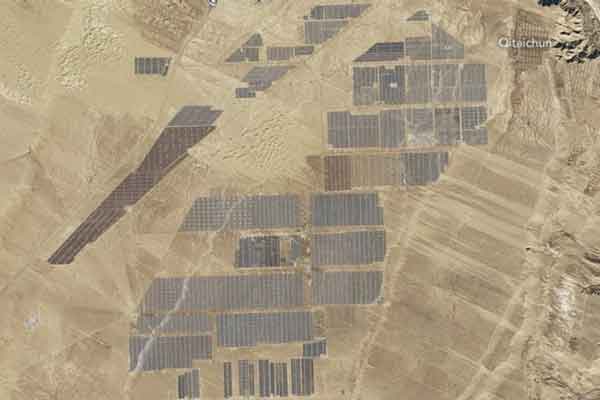China made its mark as the world’s largest solar power producer by capacity.
To reach this goal, the country installed 34.54 gigawatts in 2016 bringing its total capacity to over 77.42 gigawatts.
Numerous large-scale solar power installations add or contribute to this goal, one of which is a 27 square kilometers (10 square miles) solar park in Qinghai province.
Located in the Tibetan Plateau in eastern China, this massive structure is made up of 4 million solar panels that silently soak up the sun as part of the Longyangxia Dam Solar Park.
This is the largest solar farm in the world, spreading over 10 square miles of the high desert landscape.
The complex sprung into existence in 2013 and has been rapidly expanding ever since.
Check out this time-lapse satellite imagery curated by NASA’s Earth Observatory, chronicling the plant’s growth from a cluster of panels to a sprawling solar farm.
It looked like a giant, angular question mark as of January 2017.
So cool!
.gif)
The Longyangxia Dam Solar Park captured by Landsat 8 in April 2013 and again in January 2017. Credit: NASA Earth Observatory
H/T: Scientific American













Comments